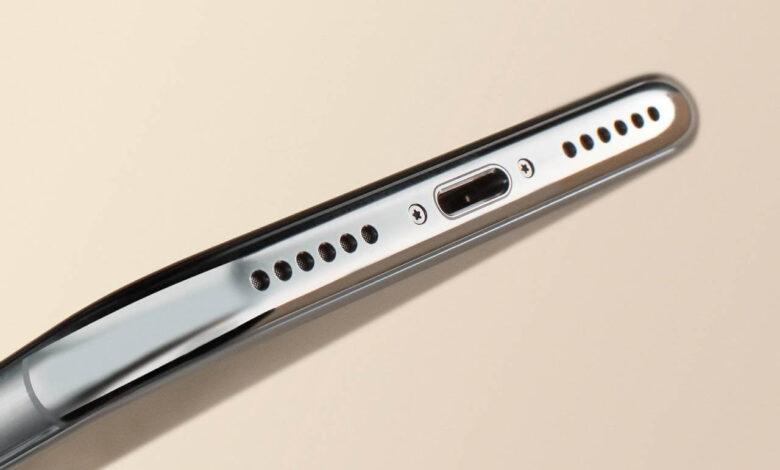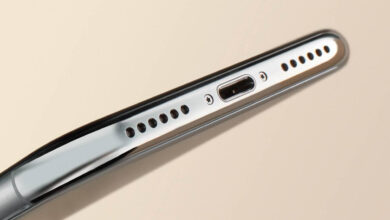How to Make Phone Speaker Louder: Simple Tips for Better Sound

When you’re trying to enjoy your favorite tunes or catch every word of a podcast on the go, the volume on your phone’s speaker can sometimes fall a bit short. Whether you’re dealing with ambient noise or a speaker that doesn’t pack a punch, a subdued sound can diminish your listening experience. Luckily, there are several simple methods to amplify the sound on your device, ensuring that your music, calls, and media are loud and clear.
Adjusting your phone’s settings can significantly impact the speaker volume. Your device likely comes with built-in audio features and equalizer settings that, when tweaked, can enhance the overall loudness. Altering the EQ settings can cater to the type of audio you’re listening to, be it bass-heavy music or vocal-focused podcasts, without the need for additional equipment. Additionally, understanding the way your phone’s volume controls work—separately handling the ringer volume and the media playback—can be crucial to optimizing the sound.
Sometimes, external factors like the phone’s positioning or the surface it’s resting on can affect the speaker’s volume output. Proper placement can help project sound more effectively, and a clean speaker grill allows for unobstructed audio. Integrating these practices with the appropriate device settings can transform your listening session into an immersive sound experience, even without an external speaker.
Understanding Phone Speakers
When looking to amplify your phone’s sound, it’s helpful to understand the components and functionality of its speakers.
Types of Phone Speakers
Internal Speakers: These are built into your phone and are the primary source for sound output. Most smartphones have at least one internal speaker, typically located at the bottom or front of the device.
External Speakers: These are additional speakers that you can connect to your phone via Bluetooth or a wired connection for an enhanced audio experience.
How Phone Speakers Work
Your phone’s speakers convert electrical energy into mechanical energy to produce sound. This happens when an electrical current passes through a voice coil, causing it to move back and forth in response to the signal. This movement, in turn, vibrates the speaker cone, pushing against the air to create sound waves that you can hear.
Basic Volume Adjustment
Making your phone speaker louder often starts with the simplest steps: adjusting the volume using the physical buttons and software settings on your device.
Physical Volume Buttons
Your phone’s physical volume buttons, usually located on the side of the device, are the most direct way to increase speaker volume. Pressing the Volume Up button will increase the speaker’s loudness incrementally, so keep pressing until you reach the desired volume level.
Software Volume Settings
Beyond just the physical buttons, your phone’s settings menu is your go-to for fine-tuning volume. Navigate to Settings and look for Sound or Audio settings; here, you can adjust the volume sliders for media playback to ensure your speaker volume is maxed out. In some cases, you might find an additional option to disable any volume limits that have been set, which can further boost speaker loudness.
Enhancing Volume Without Apps
There are simple and effective ways to amplify your phone’s speaker without the need for additional software. Here’s how you can achieve clearer and louder sound through physical methods.
Cleaning the Speaker
Dirt and debris can often clog your phone’s speaker mesh, resulting in muffled sound. To clean it:
- Turn off your phone and remove any cases or accessories.
- Use a soft-bristled brush to gently sweep away any visible dirt.
- For stubborn grime, lightly dampen a microfiber cloth with isopropyl alcohol and wipe the speaker mesh.
Positioning the Phone
The way you position your phone can also affect the volume output.
- Place your phone in a ceramic bowl to amplify sound. Make sure the speaker is facing downward into the bowl.
- Propping your phone against a wall or object can also create a makeshift amplifier, directing the sound towards you.
Using Volume Booster Apps
If you find your smartphone’s volume levels lacking, there are apps specifically designed to boost the sound. Let’s look at how to pick the right app and understand the potential risks.
Choosing a Volume Booster App
-
MX Player: Known primarily for video playback, MX Player offers a volume boost feature that can amplify sound in videos by up to 200%. It’s user-friendly with gesture-based controls. You can enable the volume boost in the app’s audio settings.
-
Volume Booster Pro: A straightforward app that amplifies the loudness of music, phone calls, alarms, and system sounds like ringtones and notifications. It’s compatible with Android devices and free to download.
When selecting an app, check its compatibility with your device and whether it supports boosting the specific audio output you’re interested in, like music or video playback.
Risks of Using Booster Apps
Using booster apps comes with certain risks:
-
Sound Distortion: Increasing volume beyond the phone’s designed capacity can cause sound distortion.
-
Speaker Damage: Long-term use of booster apps may damage your phone’s speakers.
-
Security Concerns: Some apps may request unnecessary permissions that could compromise your privacy and security.
Always download apps from trusted sources and check reviews to gauge performance and security.
Advanced Settings and Accessories
When you’re looking to maximize the volume on your phone, there’s more you can do than just pushing the volume buttons. Tailoring advanced settings and choosing the right accessories can have a significant impact on your sound experience.
Equalizer Settings
Adjusting the equalizer settings on your phone can tremendously enhance your speaker’s output. This feature fine-tunes the audio to suit your listening preferences or to compensate for any deficiencies in the speaker’s sound profile.
- Android: Go to
Settings > Sounds and vibration > Sound quality and effects > Equalizer, and customize the levels as desired. - iPhone: Head to
Settings > Music > EQ, and select a preset that boosts the frequencies you want to amplify.
Remember that boosting bass frequencies too much may lead to a muddy sound, especially if your speaker isn’t designed to handle it.
External Speakers and Receivers
External devices like speakers and receivers can be a game-changer if your phone’s volume isn’t cutting it.
-
Bluetooth Speakers: Pair a portable Bluetooth speaker for a substantial volume boost.
- How to pair:
- Turn on your Bluetooth speaker.
- Go to your phone’s Bluetooth settings.
- Select the speaker from the list to pair it.
- How to pair:
-
Auxiliary Receivers: Use an AUX or lightning adapter to connect your phone to larger sound systems.
- Fidelity tip: Wired connections can offer better sound quality without Bluetooth compression.
Choosing the right accessories based on your needs—portability, sound quality, or volume—can make all the difference.
Troubleshooting Common Issues
Before you consider replacing your phone’s speaker, it’s worth trying a few troubleshooting steps. Identifying the root cause of the problem often leads to simple, DIY solutions.
Diagnosing Audio Problems
To start diagnosing audio issues, first check that your phone’s volume is not muted and the sound level is adequately high. Next, verify if your phone’s speaker might be blocked or covered by a case or debris, which could muffle the sound. Follow these basic steps:
- Ensure Volume Level: Go to your settings and adjust the volume controls to make sure they are set to an audible level.
- Clean the Speaker: Gently use a soft brush to remove any dust or debris from the speaker grill.
- Inspect for Physical Damage: Look for visible signs of damage that might require professional repair.
- Check Sound Settings: Make sure that ‘Do Not Disturb’ mode is not activated and that other sound settings aren’t inhibiting playback.
- Perform a Soft Reset: Restart your phone to refresh the system and potentially resolve any minor software issues.
- Water Ejection: If your phone got wet recently, utilize tools that help eject water from your phone’s speakers.
Seeking Professional Help
Should these steps fail to resolve the issue, it may be time to seek professional help. Contact your phone’s manufacturer for support or visit an authorized repair center. Keep in mind that DIY repairs can often lead to voiding warranties, so sometimes it’s best to rely on experts especially for complex internal issues or potential hardware faults.
Frequently Asked Questions
In this section, you’ll find solutions to common issues related to your phone’s speaker volume, including settings adjustments and simple tricks to enhance loudness.
What settings can I adjust to increase the volume on my iPhone?
To increase the volume on your iPhone, press the volume up button on the side of your device during use. Check the Sound settings to ensure volume limits are not set. Additionally, you can adjust the EQ settings for music playback to the “Late Night” option which can amplify output.
Why isn’t my phone’s speaker volume very high and how can I fix it?
If your phone’s speaker volume isn’t high, make sure the volume levels are turned up and not limited by any settings. Keep the speaker grills clean to prevent sound muffling. If the issue persists, it may be due to hardware limitations or a software issue that could be fixed with an update.
Can I make my Android phone speaker sound louder without using additional hardware?
Yes, on your Android device, you can increase the speaker volume by adjusting the media volume settings. Some phones may have a built-in equalizer or sound enhancement settings to boost volume further, which can be found in the Sound or Music settings.
Are there specific methods to boost speaker volume on Samsung devices?
For Samsung devices, you can try enabling “Adapt Sound” or “SoundAlive” feature in the settings, which can fine-tune the audio experience. Additionally, Samsung often includes a separate media volume limiter that you can adjust or disable for a louder output.
What tricks can enhance the loudness of my phone’s speaker during calls?
During a call, press the volume up button to raise the call volume. Make sure the speaker isn’t covered by a case or any obstruction. For iPhones, you can also turn on the “Phone Noise Cancellation” feature in the settings to improve call clarity.
How can I amplify my iPhone’s volume without external speakers?
To amplify your iPhone’s volume, check for any blockages in the speaker grills and clean if necessary. Enable the volume limit off in the Music settings and select the “Late Night” EQ setting. Keep your iPhone in a more acoustically favorable spot like a bowl or a cup to increase loudness temporarily.
